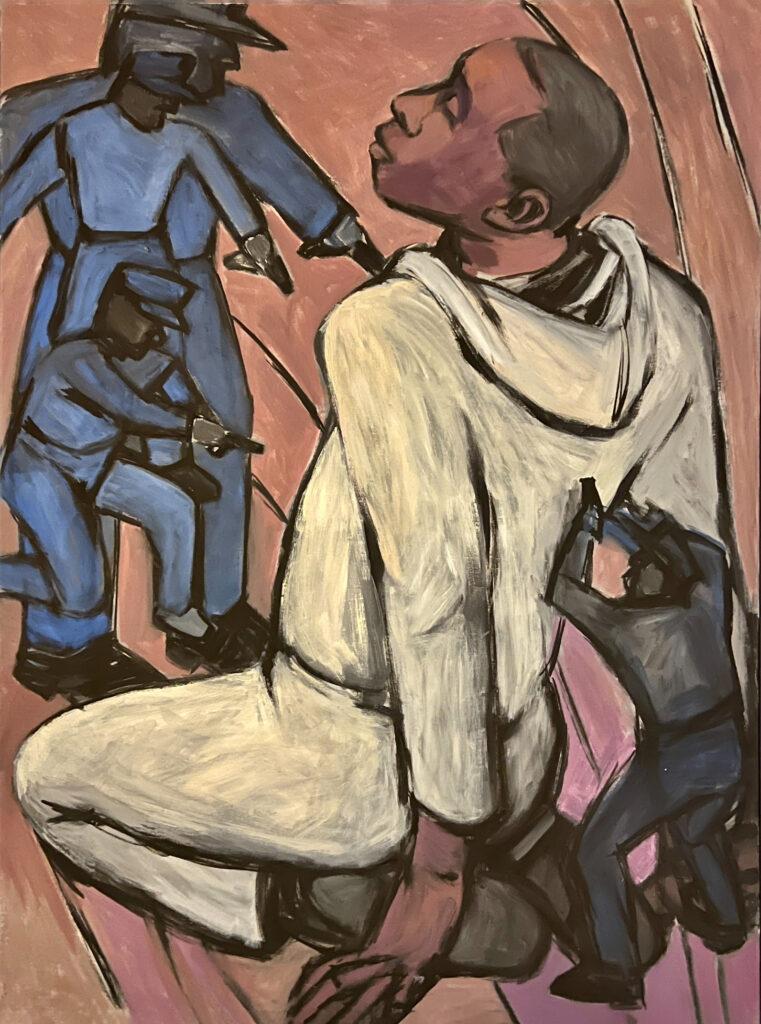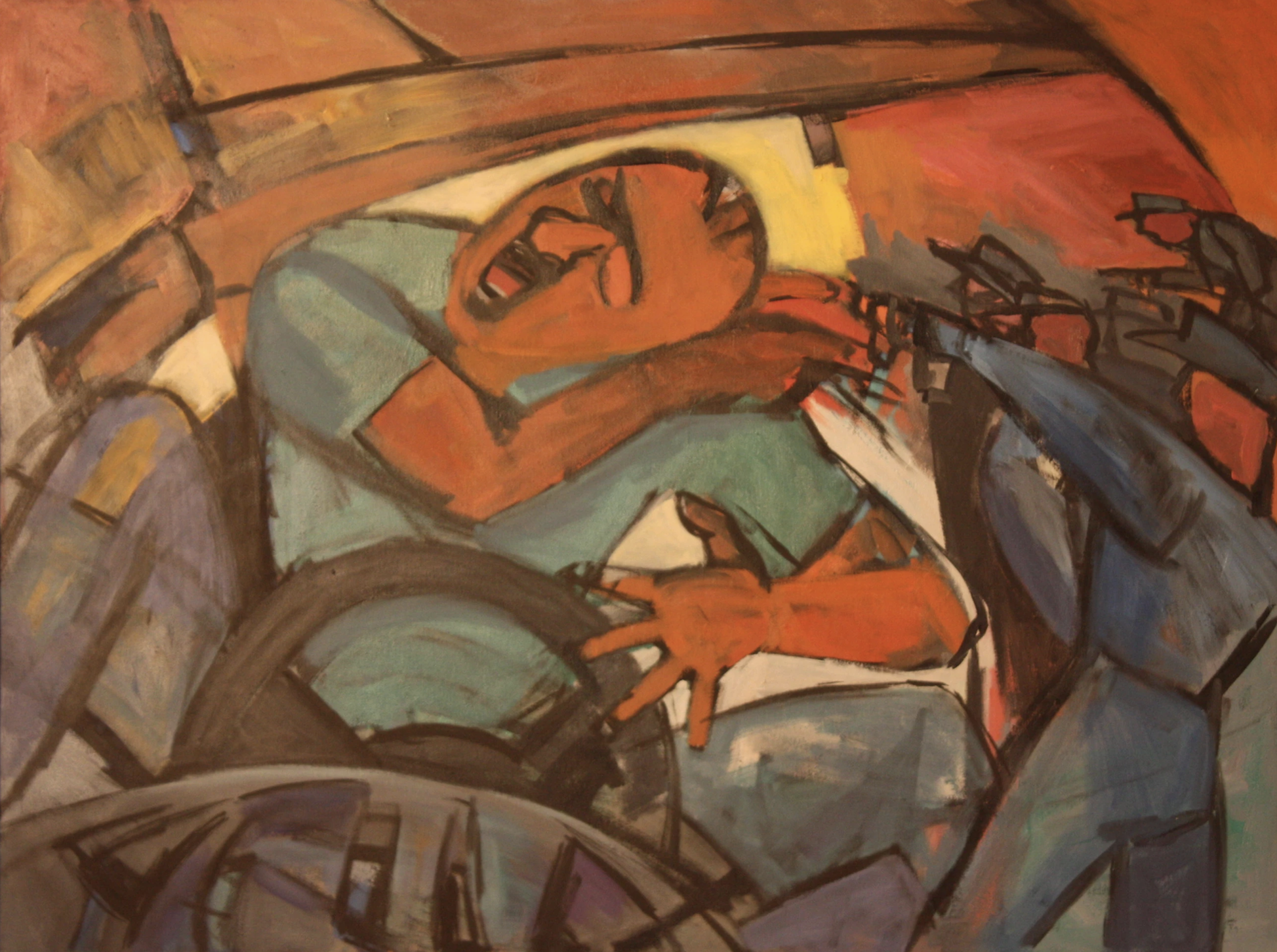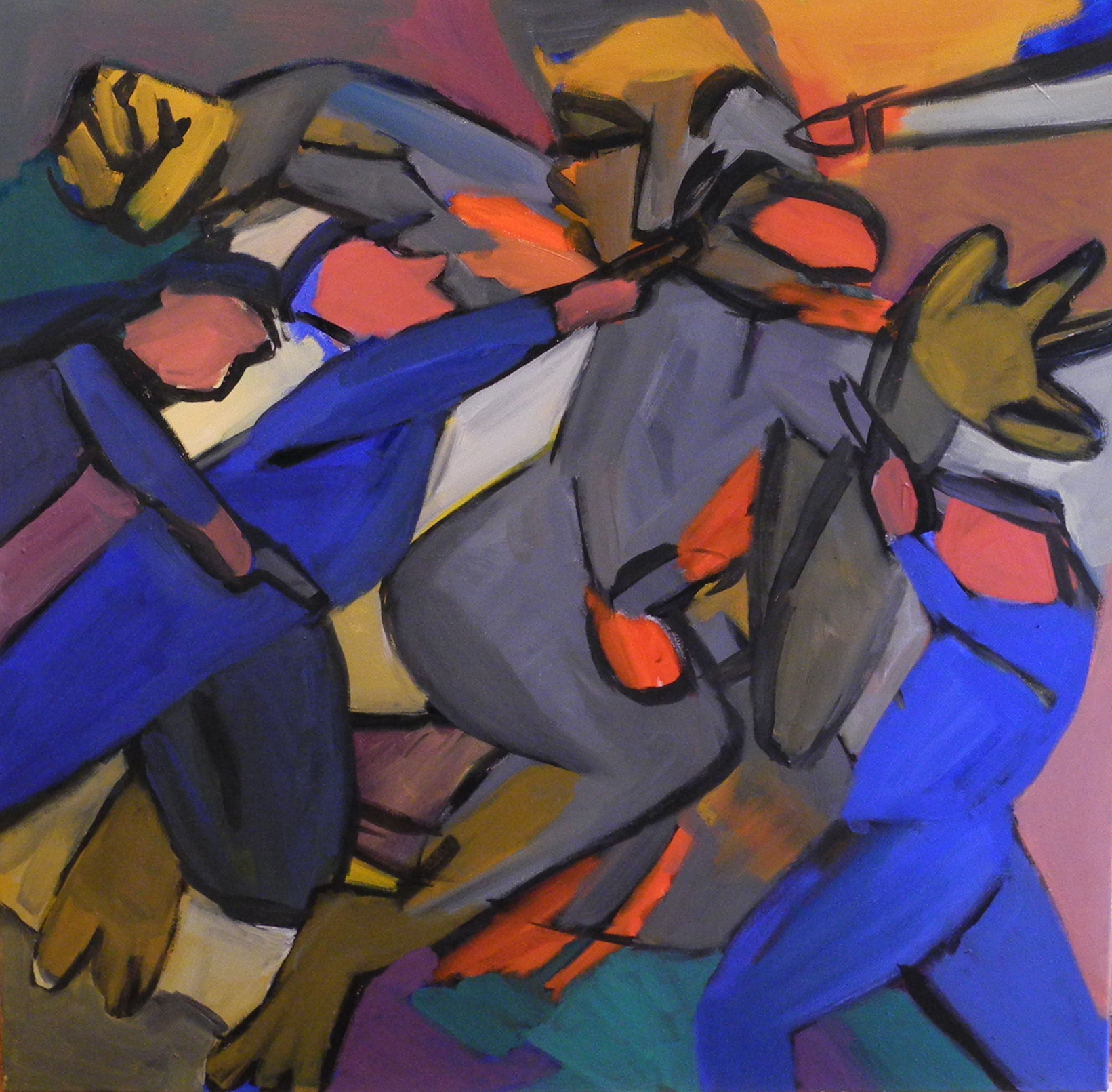Kimani Had a Gun, 2012 Oil on canvas Collection Godwin-Ternbach Museum, Gift of Dr. John Hunter and Dr. Harold Kooden, 2024.2.1
We continue to dance to the music of history in the twenty-first century and often it ends in a tragic and dispiriting way. In 2012 and 2013, there were a series of deadly encounters between black men and police in New York City. The first of these was videoed and shown on the evening broadcast news. A clearly deranged young black man named Darrius appeared in the Times Square district nearly naked waving a knife. The police responded by approaching him as a group and, as he backed away from them, they pursued him. They warned him to drop the knife, which he did not do, and they shot him. Although this was considered a reasonable police action, given the supposed threat to the public, and the non- responsiveness of Darrius, this death fit the pattern of several other deaths where black men were slain basically for being black. Whatever the circumstances for the police encounters, the end was the same. The deaths have precedence in the brutal policing practices of black enslavement and, after Emancipation, in the Jim Crow era of lynching. The list of victims in New York include Joel, Reynaldo, and Kimani. The list nationwide is extensive, culminating in the death of George Floyd. We continue to dance to the music of history.
Darrius Must Die, 2012; Joel in the Traffic Stop, 2012; Reynaldo Meets the Man, 2012; and Kimani Had a Gun, 2013
These four paintings were not originally intended as a series. Unfortunately, the murders by police of these four unarmed black men in New York City prompted these individual, mute responses. Darrius died near Times Square because of his erratic behavior. Joel died in a traffic stop in Queens. Reynaldo died outside of a bodega in the Bronx after a call to the police. Kimani was shot by police because he was suspected of having a gun.





